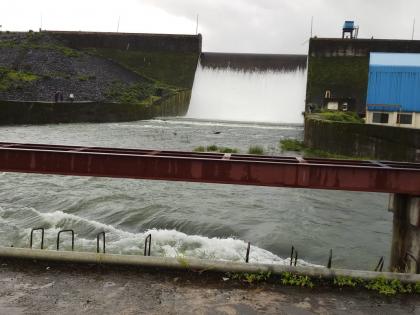Nashik: Dams Reach 40% Capacity After Heavy Rains in June; 32% Higher Than Last Year
By Chitra Rajguru | Updated: June 25, 2025 16:27 IST2025-06-25T16:27:08+5:302025-06-25T16:27:08+5:30
The continuous rains in Nashik district over the past few days have significantly improved water levels in the region's ...

Nashik: Dams Reach 40% Capacity After Heavy Rains in June; 32% Higher Than Last Year
The continuous rains in Nashik district over the past few days have significantly improved water levels in the region's dams. As of now, 24 big and small dams in the district have a total water storage of 26,246 million cubic feet, which is 40% of their total capacity. This is 32% more than the storage during the same period last year.
In 2023, by this time, only 8% water storage (5,063 million cubic feet) was recorded. This year, thanks to consistent and heavy rainfall in June, water levels have risen quickly — an unusual situation so early in the season. The total water storage is now about 21,000 million cubic feet more than last year.
According to officials, 13 talukas, excluding Igatpuri and Malegaon, have received more than their annual average rainfall. This has resulted in steady inflow into the dams from their catchment areas. Some dams have already stored more water than the planned limit for June, leading to controlled releases from a few of them.
Major Dam Water Releases (June 23):
Gangapur Dam (main water source for Nashik city): Currently at 62% capacity, with 4,400 cusecs of water being released.
Darna Dam: 4,742 cusecs released.
Kadwa Dam: 1,060 cusecs released.
Nandur Madhyameshwar Dam: 15,775 cusecs released.
Current Water Storage in Key Dams (in million cubic feet):
Gangapur – 3455 (62%)
Kashyapi – 936 (51%)
Gautami-Godavari – 614 (33%)
Alandi – 324 (40%)
Palkhed – 481 (74%)
Karanjvan – 1458 (28%)
Waghad – 618 (27%)
Ozarkhed – 632 (30%)
Punegaon – 151 (25%)
Tisgaon – 42 (10%)
Darna – 4091 (58%)
Bhavli – 1016 (71%)
Mukne – 3535 (49%)
Valdevi – 521 (46%)
Kadwa – 781 (47%)
Nandur Madhyameshwar – 84 (33%)
Bhojapur – 257 (72%)
Chanakapur – 991 (41%)
Haranbari – 371 (32%)
Nagasakya – 29 (6%)
Girna – 4905 (27%)
Punad – 584 (45%)
Manikpunj – 70 (21%)
Officials from the Irrigation Department say this is a positive sign for the region’s water supply, agriculture, and electricity needs. However, further rainfall will be crucial to reach full capacity in the coming months.
Open in app